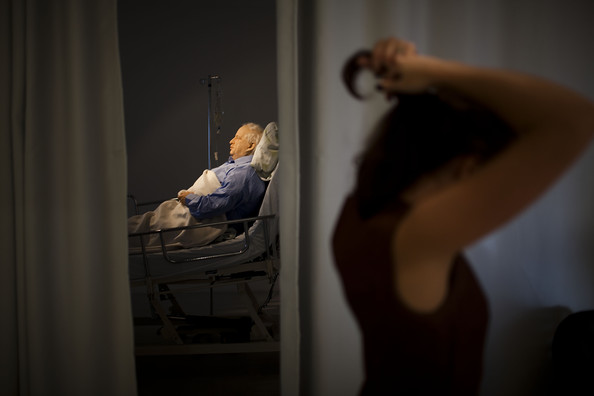The Digital Cuttlefish is the online alias of a person who, in his/her own words, is a “skeptic and atheist versifier”. DC has self-pseudonymised as such because:
The cuttlefish will use its ink
To hide itself – and so, I think
Will I…
The Digital Cuttlefish is a very skilful versifier indeed — stunning rhymes; dizzying rhythms – DC is a dactyl tamer, an anapaest whisperer. All DC’s verse has that insouciant unforcedness which is the hallmark of the master craftsperson. You might like to spend some time at the blog (link at the end of this).
The Digital Cuttlefish has written about death, of course, and those of you who are more than half in love with that easeful subject (why else would you be here?), want me now to cut to the chase and do the verse. That I am in a position so to do, I must tell you first, is down to tense and protracted negotiations with The Digital Cuttlefish (‘DC, would you mind if?’ ‘My dear fellow, fill your boots.’) The point: I reproduce with permission
Two choice pieces here for you. Because the Digital Cuttlefish doesn’t use titles, I must explain that the first is a reflection sparked by a funeral and other topical events:
You can die in bits and pieces; you can die in one quick flash
Die the ancient voice of wisdom, or die early, young and brash
Tuck your body in a coffin; pick an urn to hold your ash
Your survivors will remember you and cry
In the stories of your childhood, of your young and reckless past
How you fiercely burned your candle—who could think it would not last?
You could live to be a hundred; it would still be gone too fast
Life is never seen so brief as when we die
The second is a response to a retort by a Christian that “… I reckon I’d be a pretty miserable, angry person with a chip on my shoulder if I also believed that I was no more than worm meat at the end of the day.“
One of The Digital Cuttlefish’s fans has asked to have this read at his funeral:
When we are dead, we’ll feed the worms
And other stuff that writhes and squirms
And if you cannot come to terms
With that—well, use your head!
There are no ifs nor ands nor buts:
Bacteria within our guts
Will start to eat us; that is what’s
In store, once we are dead.
Yes, life is short and full of toil,
And when we’ve shuffled off this coil
Our carcasses will start to spoil—
There’s nothing wrong with that.
Our share of fish or pigs or cows,
And all the chicken time allows,
Is done. It’s only fair that now’s
The worms’ turn to get fat.
Should we die young, or old and gray,
The laws of nature we’ll obey
And spend our heat in mere decay,
Replenishing the Earth;
“Three score and twelve” may be our years
For love and laughter, hope and fears
And then—mere smoke—life disappears;
No heaven, no rebirth.
And with no heaven up above
Nor hell we ought be frightened of
It’s best we fill our lives with love,
With learning, and with fun!
Don’t waste a lifetime while you wait
For halo, wings, and pearly gate—
This is your life, so get it straight:
You only get the one!
I’ll have no moment lost to prayer,
To cleanse my soul and thus prepare
For passage to… THERE’S NOTHING THERE!
Those moments, all, are wasted!
I’m only here a little time
Before it’s bugs and worms and slime;
I’ll eat and drink my life so I’m
Delicious when I’m tasted!
Find The Digital Cuttlefish here.
Buy The Digital Cuttlefish’s books here and here.
The Digital Cuttlefish is on Facebook.

